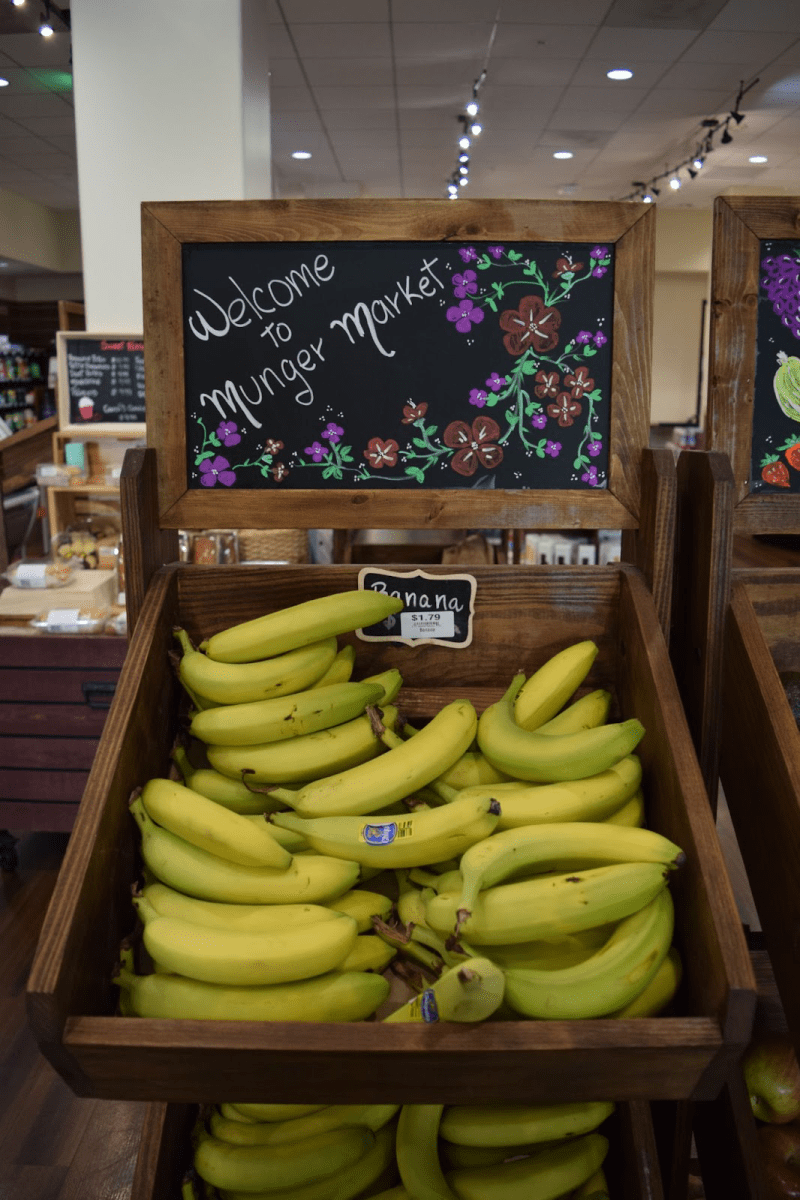Produce prices at the Market at Munger surged as students returned to campus. The price hike limits access to groceries, graduate students and students with disabilities told The Daily. Many items were marked up over 50% since last Spring.
Munger Market, located near the Munger Graduate residences, is a convenient on-campus spot where undergraduates can purchase food and drinks with Meal Plan Dollars. Some graduate students said it is an essential venue for them to obtain ingredients to cook their own meals, despite its more expensive price range compared to other grocery stores in the area. A banana, which costs 17¢ at the Trader Joe’s in Town and Country, costs 99¢ at Munger. However, the recent price increases made several items unaffordable to the market’s customers.
Several students frequenting Munger Market captured the degree of the price hike. A 16 oz bottle of GT’s Synergy Raw Kombucha, which is available for $2.99 at Trader Joe’s and $4.99 previously at Munger, is now sold for $7.99, according to Sid Zhang ’25. This constitutes a 60% increase. Richard Yin ’25 estimated that the price of a pint of Halo Top ice cream rose by 33% from around $6 to $7.99. Rachel D’Agui told The Daily that the price of half a gallon of Clover 2% milk increased by 88% from $3.99 to $7.49.
In a statement to The Daily, Jocelyn Breeland ’81, the chief officer for strategic communications and marketing for R&DE, wrote that the price hike was a consequence of Munger Market’s efforts to “balance the needs of students and rising costs due to inflationary and labor pressures, hybrid work and supply chain challenges.”
“We are dedicated to affordability for students and are taking steps to provide alternatives for students, who are our top priority,” Breeland wrote.
Alternatives they are exploring include working with suppliers to find alternative products, combining efforts with the dining halls to “leverage purchasing power,” partnering with third party delivery companies to offer a convenient grocery delivery option and lowering prices wherever possible.

Juliana Lamm-Perez ’25 expressed frustration with the rising prices leading to an unaffordable cost of living at Stanford.
“It is unfair that a market created for the students cannot be affordable for the students,” Lamm-Perez said.
According to some students, the price hike disproportionately affects students who rely on Munger Market for groceries near their residences, including graduate students and students with disabilities.
Lloyd May, who is the Associated Students of Stanford University’s director of disability advocacy, said Munger Market provides access to necessities for students with disabilities. “Munger market is one of the few venues that are easily accessible without having to navigate some form of campus transportation,” May wrote.
According to May, the market also provides a safer alternative to grocery stories off campus for those trying to minimize their risk of contracting COVID-19.
“Students at risk may choose to shop at venues like Munger due to their small size and close proximity to campus housing so as to not risk going to larger stores where more people are likely to be unvaccinated, not test as regularly, and be unmasked,” he wrote.
May also wrote that graduate students with disabilities will acutely feel the impact of a price hike, especially as the university continues to raise graduate housing rents.
Graduate Student Council co-chairs Emily Schell and Jason Anderson echoed similar concerns about the price hike’s disproportionate impact on graduate students’ access to food.
“The notoriously high prices [already] precluded many of our constituents (ourselves included) from frequenting it,” Schell and Anderson wrote in an email to The Daily. Financial insecurity, housing insecurity, and a lack of public transit options exacerbate the disproportionate impact of this price hike, Schell and Anderson wrote.
Some undergraduates also voiced concerns over the fairness of its pricing. For example, students living in Row houses are more dependent on Munger Market for meals because they receive limited meal swipes, Justeis Mae Saephan ’24 pointed out. The problem has been exacerbated by price hikes across the board at Stanford restaurants — the Axe & Palm invited students back to campus by raising prices to new heights following a summer of rampant inflation. For students like Kohle Jackson ’25 who have traditionally leaned on Stanford meal plan dollars (which have not changed from last year), the uniform price hikes have been a rude awakening.
